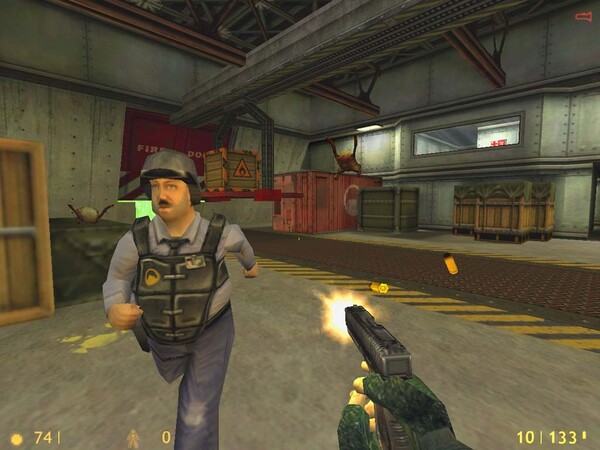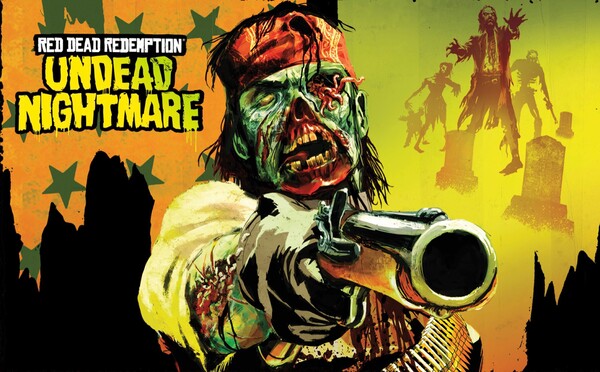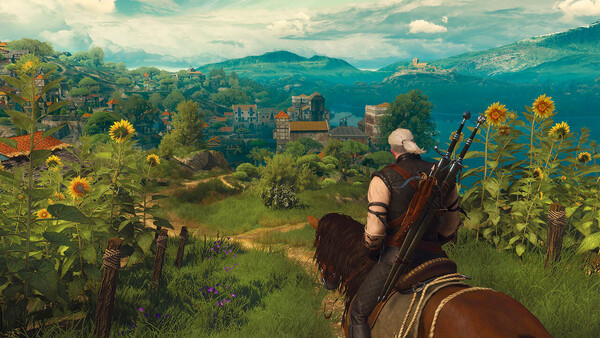1. Starcraft: Brood War (1998)
These days, strategy games are hardly thought of as a hotbed of innovation, but Brood War provided it in spades. Its continuation of the base game’s story, punctuated by striking (certainly for the time) cutscene delivery, drew wide acclaim and helped swell its popularity. The competitive scene that Brood War built would last for over a decade, only stepping aside once the full sequel – and its own expansions – arrived.
2. Half-Life: Opposing Force (1999)
Half-Life brought a hitherto-unheard-of level of narrative quality to the first-person shooter, and Opposing Force did the same for FPS expansions. Sure, it brought new weapons, enemies, and explosive set-pieces, but much of Opposing Force’s shine came from how it was a parallel narrative occurring at the same time as the base game, expanding on it in a literal sense in a manner that would be similarly lauded with Halo 3: ODST and Grand Theft Auto IV’s Episodes from Liberty City.
Are you a techie who knows how to write? Then join our Team! Wanted:
- Specialist News Writer
Details here
3. Warcraft III: The Frozen Throne (2003)
The Frozen Throne itself may not have been ground-breaking in its main content or story, but the seeds it planted had major influence down the line. Story threads from the expansion’s campaign would be the groundwork for the genre-defining World of Warcraft (plus many of its own expansions), while its overhauled World Engine creation tools would allow for custom games like the genre-creating Defense of the Ancients.
4. Red Dead Redemption: Undead Nightmare (2010)
Red Dead Redemption was already in the hall-of-fame for games of its generation – perhaps amongst the best of all time – before Rockstar dropped the Undead Nightmare expansion that overhauled the base game’s map, tone, and story. As well as being an excellent experience in its own right, the practice of refurbishing the world of a game as a foundation for new content was picked up on by other developers, often with a similar genre-bending twist, like in Far Cry 3: Blood Dragon or Saints Row IV.
Top 10 Laptops
Multimedia, Budget Multimedia, Gaming, Budget Gaming, Lightweight Gaming, Business, Budget Office, Workstation, Subnotebooks, Ultrabooks, Chromebooks
under 300 USD/Euros, under 500 USD/Euros, 1,000 USD/Euros, for University Students, Best Displays
Top 10 Smartphones
Smartphones, Phablets, ≤6-inch, Camera Smartphones
5. Fallout New Vegas: Lonesome Road (2011)
Truthfully, any number of the expansions for New Vegas could make Top DLC lists, but both in quality and thematically, Lonesome Road sits at the head of the table. Atmospheric and apocalyptic storytelling – even by the standards of a Fallout game – aside, it wove together story threads from the rest of the game’s content into a bold subversion of RPG tropes. Emphasising that the world didn’t just revolve around the player’s actions, and how others had their own agendas and storied lives outside of them, took Lonesome Road’s storytelling far beyond its contemporaries.
6. The Witcher 3: Blood and Wine (2016)
Unlike the other entries here, there might not be any one thing truly groundbreaking about Blood and Wine – but everything it did, it did incredibly well. The sprawling, technicolour land of Toussaint was a beautiful contrast to the base game’s Temeria, the new mutations were bombastic yet incredibly fun, and the writing provided heartfelt closure to Geralt’s long story. Even as the practice of drip-feeding content has grown in popularity in the years since, it proved – just as CD Projekt Red would do once again in this year’s Phantom Liberty – that big expansions sold as a "big lump of content" can deliver much greater impact than a hundred seasonal morsels.
Buy the Cyberpunk 2077 Xbox Wireless Controller at Amazon.com
Source(s)
Own; Teaser photo by Omid Armin on Unsplash


 Deutsch
Deutsch English
English Español
Español Français
Français Italiano
Italiano Nederlands
Nederlands Polski
Polski Português
Português Русский
Русский Türkçe
Türkçe Svenska
Svenska Chinese
Chinese Magyar
Magyar








